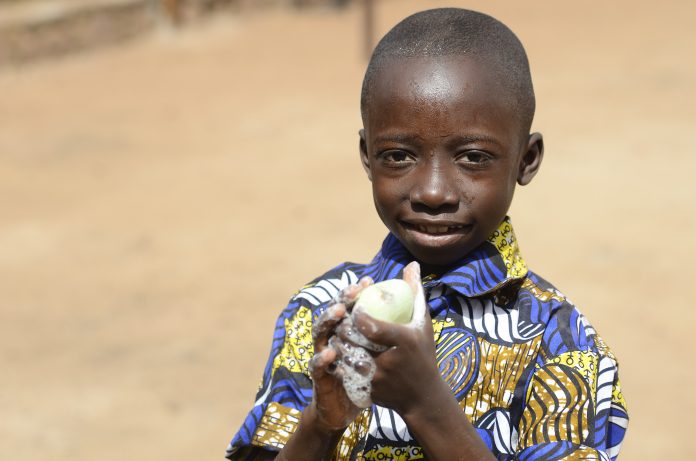Cecilia Van Cauwenberghe from Frost & Sullivan’s TechVision Group sheds light on the spread and expansion of several types of the influenza virus in Africa
According to the World Health Organization (WHO), although the impact of influenza infection in Africa is not very well documented, all the information gathered annually exhibits that influenza has a substantial impact on morbidity and mortality in Africa. Furthermore, the outcomes of important respiratory diseases and acute respiratory tract infections, such as pneumonia, caused by influenza viruses are a major cause of death, particularly among children, in the region. The following paragraphs summarise some important review studies carried out in Africa attempting to shed light on the spread and expansion of several types of influenza virus in the region.
Spatiotemporal patterns on pathogenic avian influenza
Factors contributing to the virus spreading in Africa
In an unprecedented study published in Nature during 2019, researchers from the Department of Comparative Biomedical Sciences, Istituto Zooprofilattico Sperimentale delle Venezie, Legnaro, Italy, along with many other European and African leading health research centres (Fusaro et al., 2019), portrayed the spatiotemporal patterns of highly pathogenic avian influenza (HPAI) H5Nx of the Gs/GD lineage virus diffusion during three HPAI H5Nx intercontinental epidemic waves to explore the role of Africa in the dynamics of the global spread of the virus. This spread and expansion have been revealed to be highly complex when analysing ecological, environmental and economic variables. According to the scientists, Africa would have acted as an ecological sink of the HPAI H5Nx viruses. The study also emphasises economic activities such as poultry trade, and natural phenomena such as wild bird migrations (Abolnik et al., 2019), in the contribution to the virus spreading into Africa. Special stress is made in West Africa, which is considered to act as a crucial hotspot for virus introduction and dissemination into the continent.
Present limitations in surveillance and vaccine administration
Researchers from the Vaccines and Immunity Theme, Medical Research Council Unit at the London School of Hygiene & Tropical Medicine, Banjul, The Gambia, along with other two London-based research institutions (Linsey et al., 2019), have worked on a systematic review on the efficacy, the effectiveness and the immunogenicity of influenza vaccines in populations within Africa. The study reveals that the burden of influenza in Africa is significant and disregarded. Even though some surveillance task forces have increased during the past five years (Biggerstaff, 2019), the African medical community lacks an in-depth understanding of seasonal influenza dynamics and global spread. Furthermore, vaccine delivery and administration remains critically limited. Moreover, sources of surveillance information, particularly in Africa, are insufficient and inadequate for such a large population (Sambala et al., 2019).
This fact can be also revealed in a study carried out by a team of researchers from the Influenza Division, Centers for Disease Control and Prevention, Atlanta, Georgia, United States (Tempia et al., 2019). The investigators also emphasise the need to estimate the burden of medically and non-medically attended influenza-associated illness among individuals with different clinical presentations and levels of severity, for instance, respiratory or circulatory diseases. Preconditions play a critical role in overcoming the disease for the influenza virus (McMorrow et al., 2019).
Final remarks
Influenza virus outcomes in Africa are weakly documented. However, during the past three years, several combined research centres have directed their investigations to this phenomenon and have allowed the medical community to accede to a better perspective of the expansion of the virus, as well as, the main factors contributing to its spread. Although influenza infrastructure systems are essential for maintaining successful surveillance operations aimed towards mitigating and prompting a response to disease control, the activities of isolating and identifying new influenza strains and preparedness for a forthcoming influenza consequence in humans are coordinated in an irregular way. Additional focus is, therefore, needed to strengthen surveillance and vaccination, along with additional multiple-site, combined studies to better predict the impact of the influenza virus across the continent.
Acknowledgements
I would like to thank all contributors from industry involved with the development and delivery of this article from Frost & Sullivan.
References
- Abolnik, C., Pieterse, R., Peyrot, B.M., Choma, P., Phiri, T.P., Ebersohn, K., Heerden, C.V., Vorster, A.A., Zel, G.V.D., Geertsma, P.J. and Laleye, A.T., 2019. The incursion and spread of highly pathogenic avian influenza H5N8 clade 2.3. 4.4 within South Africa. Avian diseases, 63(1s), pp.149-156.
- Biggerstaff, M., 2019. Antenatal influenza vaccination cost effective in South Africa. PharmacoEconomics & Outcomes News, 839, pp.4-19.
- Fusaro, A., Zecchin, B., Vrancken, B., Abolnik, C., Ademun, R., Alassane, A., Arafa, A., Awuni, J.A., Couacy-Hymann, E., Coulibaly, M.B. and Gaidet, N., 2019. Disentangling the role of Africa in the global spread of H5 highly pathogenic avian influenza. Nature communications, 10(1), pp.1-13.
- Lindsey, B.B., Armitage, E.P., Kampmann, B. and de Silva, T.I., 2019. The efficacy, effectiveness, and immunogenicity of influenza vaccines in Africa: a systematic review. The Lancet Infectious diseases, 19(4), pp.e110-e119.
- McMorrow, M.L., Tempia, S., Walaza, S., Treurnicht, F.K., Ramkrishna, W., Azziz-Baumgartner, E., Madhi, S.A. and Cohen, C., 2019. Prioritization of risk groups for influenza vaccination in resource limited settings–A case study from South Africa. Vaccine, 37(1), pp.25-33.
- Sambala, E.Z., Ndwandwe, D.E., Imaan, L.M. and Wiysonge, C.S., 2019. Evaluation of influenza surveillance systems in sub-Saharan Africa: a systematic review protocol. BMJ open, 9(1), p.e023335.
- Tempia, S., Walaza, S., Moyes, J., Cohen, A.L., McMorrow, M.L., Treurnicht, F.K., Hellferscee, O., Wolter, N., von Gottberg, A., Nguweneza, A. and McAnerney, J.M., 2019. Quantifying How Different Clinical Presentations, Levels of Severity, and Healthcare Attendance Shape the Burden of Influenza-associated Illness: A Modeling Study From South Africa. Clinical Infectious Diseases, 69(6), pp.1036-1048.











